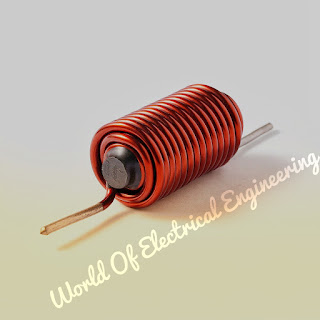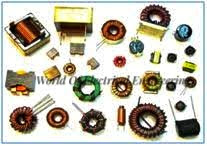What is Inductor?
 |
What is Inductor? |
- Inductor is the basic parameter of any electrical circuit. Inductor is nothing but a simple coil winding. Inductor is widely use in electrical as like resistor. All basic information is shown below.
- Definition
A copper wire wound into a coil on the core is called inductor. Inductor also known as chock or reactor.
- Symbol
 |
| Symbol of Inductor |
- Description
Inductor is passive element. Inductance of inductor is depends on length of coil, number of turns in coil, area encircled by coil and also material of core.
Mathematically,
L= μN2A / l
Where, L= inductance in henri (H)
N= number of turns into coil
A= area encircled by coil
l = length of coil (m)
μ= permeability (Wb/A.m)
- When, we apply current at one side of the coil, magnetic field is produce around the coil. If the area of coil is large and also by change core material then strong magnetic field is produced around the coil.
- If we apply current at the left to right side than magnetic field is produce in clockwise direction and vice versa.
- Inductor is capable to stores the energy in form of magnetic energy.
- Inductor does not allow sudden change in current.
- Series Connection Formula:
L= L1+L2+L3+.....+Ln
- Parallel Connection Formula:
1/L = 1/L1 + 1/L2 + 1/L3 +....+ 1/Ln
- Types of Inductor
- Air core type inductor
- Iron core type inductor
- Ferrite core type inductor
- Multy level inductor
- Thin film inductor
- Different types of inductor images
 |
| Various Types of Inductor |
- Applications of Inductor
- Filters
- Transformers
- Sensors
- Motors
- Fan... etc...

I m not an engineer but i have seen these type of instruments in machine amazingly described sir!!
ReplyDeleteGreat
ReplyDeleteToo.. good
ReplyDeleteFor new products check out this website lighting circuit
ReplyDelete